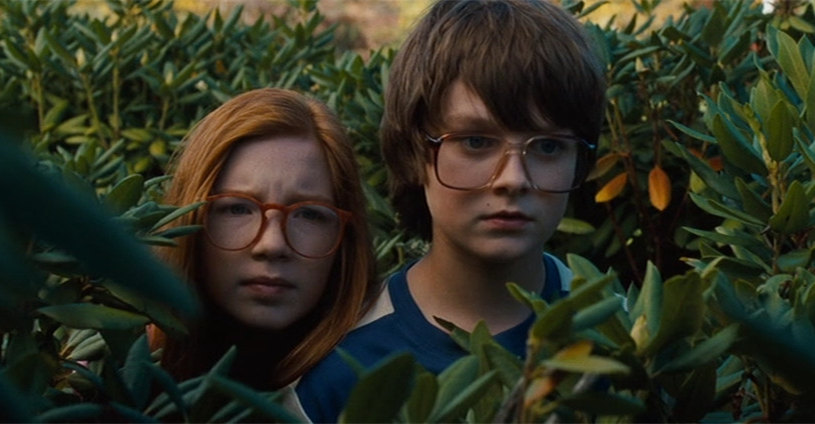I’ve lost track of where we are in the “Is it a documentary?” debate. Does Werner Herzog still need to take up arms against the actuality-shackled “accountants” of direct cinema, or do his ecstatic warriors have the battlefield all to themselves these days?
Lionel Rogosin’s “On the Bowery” (1957), released just before the direct cinema pioneers and their immediate detractors condemned us to a half century of theoretical hand-wringing (producing both some of the best and some of the worst film criticism of the era), probably would not qualify as a documentary even by today’s relaxed definition. Yet this scripted and rehearsed film received an Oscar nomination for Best Documentary in 1958, a reminder that the meaning of the term is in constant flux, redefined by the works of each new practitioner from Robert Flaherty to Jean Rouch to Errol Morris. But not those guys who made “Catfish,” please.
Perhaps it is best to avoid the baggage attached to the word “documentary,” and instead think of Rogosin’s masterpiece as one of the most “lived-in” films of its time, or of any other time for that matter. Literally lived-in, in the sense that Rogosin spent months living in the skid-row Bowery section of New York City among the army of often-homeless day workers who provided a dirt-cheap source of temporary labor, searching each morning for their next eight hours (or more) of work and, far too often, searching each night for their next drink. A hard day’s work for a hard night’s drinking, repeat ad infinitum. “On the Bowery” is a portrait of the ravages of alcoholism so vivid that I cannot off-hand think of any equivalent.
After getting to know the area and the people, Rogosin recruited several Bowery men to act in his film, performers who had already spent (too many) years living in the world the filmmaker wanted to capture and recreate in front of the lens. Ray (Ray Salyer, like everyone, playing a slightly-fictionalized version of himself) is a thirty-something Kentucky drifter who blows into town with nothing but a suitcase in hand. He meets with a potential mentor in Bowery veteran Gorman (Gorman Hendricks) who steals Ray’s suitcase after a drunken binge, but feels guilty enough about it to extend a helping hand to his friend/mark. Ray finds odd jobs, vows to get sober, fails in his vow, and repeats the cycle. This is a common ritual on the Bowery, one that Gorman knows all too well. In one of the film’s most powerful scenes, Gorman buys a drink for Ray who refuses it, once again vowing sobriety, but fully aware of the likely outcome:
Ray: “I’m not gonna say I’m not gonna do it. I’m gonna try not to do it.”
Gorman: “I’ve only said that a thousand times.”
Ray: “Well, you’ve got me by a couple of years. I’ve only said it about eight hundred.”
Rogosin originally planned to shoot without a script, but soon abandoned the idea for a more crafted narrative which he co-scripted with cinematographer Richard Bagley and writer Mark Sufrin, while also working in collaboration with Salyer, Hendricks, and his other actors, which left plenty of room for improvisation. The actors are completely convincing – Salyer was offered a Hollywood contract before he hopped on a train and vanished from written history – and even scenes that are fully scripted bear the imprimatur of reality in the lived-in faces and places of the Bowery. The ramshackle bars and chicken-wire rimmed flophouse rooms are concrete, despairing matches to the gallery of worn faces whose every crease marks the rummy, rheumy passage of time and, depending on your preferred frame of reference, will remind you of either Rembrandt or Will Eisner. Rogosin and Bagley pull of a remarkable balancing act, producing a gorgeous film in an ugly setting that does not aestheticize poverty or exploit its subjects in any way. The collaborative process was essential in the endeavor: Salyer and Hendricks were no mere props.
Rogosin’s work proved to be a major influence on both non-fiction and fiction filmmakers in the 60s and beyond, with John Cassavetes frequently citing him as a major influence. “On the Bowery” was selected for preservation by the National Film Registry in 2008, and has now been preserved on DVD and Blu-ray by Milestone Films in this remarkably expansive set.
Video:
When I reviewed Milestone’s “Araya,” I remarked that the SD transfer was so strong I had to remind myself I wasn’t watching a Blu-ray. Well, Milestone has now released its first Blu-ray and the results are impressive. The faces of “On the Bowery” are as indelible as those photographed by Walker Evans, and this transfer sourced from the 2005 2K restoration by the Cineteca del Comune di Bologna captures the details of these faces in vivid high-def resolution. Ditto for the background which, in this film, is pretty much the foreground: you can read every sign and see intricate details in the interior décor. B&W contrast is sharp throughout. “Good Times, Wonderful Times” is also presented in high-def (also from a restoration by the Cineteca) and if it doesn’t look quite as razor-sharp, it’s not far off. Rogosin mixes in a lot of archival which, of course, varies in quality. I’m sure the SD version of this looks great too, but Milestone’s Blu-ray is just a knock-out.
Both “On the Bowery” and “Good Times, Wonderful Times” are presented in their original 1.33:1 aspect ratios.
Audio:
The PCM Mono track can’t compensate for the hollow sound of much of the dialogue. I found that I had to turn up my volume settings higher than usual to make out the dialogue as clearly as I wanted to, but aside from that I have no complaints about the lossless audio. I do wish that subtitles were provided for “On the Bowery,” but I like to watch everything with subs and there’s no special reason this English language film requires them. English subs are provided for “Good Times, Wonderful Times” but only for the German dialogue (from Nazi archival clips).
Extras:
Listen, there are plenty of great companies that produce fantastic releases for the home market and I love them all, but when Milestone Films turns its attention to a subject, there’s really nobody out there who can beat them for sheer scope and exhaustive attention to detail. This two-disc set is up to their usual impeccable standards.
Disc One is loaded. “The Perfect Team” (2009, 47 min.) is directed by Michael Rogosin and includes interview footage with Lionel Rogosin that was conducted by professor and cinematographer Marina Goldovskaya from 1994-1999 in Los Angeles (Lionel Rogosin died in 2000). This documentary features an all-star panel of filmmakers and academics including Peter von Bagh, David Bordwell, Robert Downey Sr., Ray Carney and even a brief appearance by Jonas Mekas, which should give you some small sense of the esteem in which Rogosin’s films are held. This is a comprehensive history of the film’s production and of the filmmaker that should prove to be an indispensable addition to Rogosin scholarship.
In “A Walk Through the Bowery” (2009, 11 min.), Michael Rogosin returns to the Bowery, now in the process of gentrification. Even the bohemian artists who once lived there have largely vacated. Rob Hollander provides expert commentary about the history of the area. This film makes for quite a contrast with the 1972 short “Bowery Men’s Shelter” (11 min., dir. Rhody Streeter and Tony Ganz) which evinces little evidence that anything had changed since “On the Bowery.” Milestone has also included “Street of Forgotten Men” (1933, 3 min.), which shows how the wrong filmmaker can adopt a condescending, exploitive tone to the same subjects, a mistake Rogosin certainly didn’t make.
The film can also be played with a three-minute introduction by Martin Scorsese. A 2010 Trailer (2 min) rounds out the extras on Disc One.
Disc Two kicks off with Rogosin’s hybrid film, “Good Times, Wonderful Times” (1964), a movie which certainly could justify a stand-alone release. Largely out of circulation (until now!), this anti-war film was widely seen on college campuses (Rogosin self-distributed) in the 60s and it still packs a hefty rhetorical blow. Rogosin stages a cocktail party with upper-class British idlers nattering on about the problems of the world. He cuts from pithy comments such as “War is a way to control the population” to archival footage from Germany, Japan and other locales to provide stinging counterpoints to this bloodless philosophizing. He ends with a moving montage of peaceful anti-war protests, including what was then a still-fresh use of Martin Luther King, Jr.’s “I Have a Dream” speech. Some of the cuts are a bit heavy-handed and today I suspect we all suffer from “comparing things to Hitler” fatigue, but Rogosin’s argument (that there is no redemptive aspect to war, and that peaceful resistance is not futile) is still inspiring.
This might be on Disc Two of a release titled “On the Bowery,” but Milestone has given this “extra” its own feature treatment. “Man’s Peril: The Making of ‘Good Times, Wonderful Times’” (24 min.) is directed by Michael Rogosin and Lloyd Ross, and talks about the film’s production, including the degree to which philosopher Bertrand Russell (who appears in clips in the movie) served as a source of inspiration. Great stuff here too.
But, wait, there’s more! Milestone has also included “Out” (1957, 25 min.), a film Rogosin shot for the United Nations. It depicts the plight of Hungarian refugees in Austria after the Hungarian Revolution of 1956. It’s the least-accomplished of the films on the set, but wears its heart proudly on its sleeve, focusing on the plight of a mother whose husband was killed and must negotiate her way through a complex system in order to seek asylum abroad for herself and her children.
Set Value:
Milestone Films has a proud history of serving as advocates for socially-conscious filmmakers whose works have been woefully neglected by the home market. This extraordinary two-disc set is no exception. Just as they did for Charles Burnett and Kent Mackenzie and Margot Benacerraf, Milestone has produced a comprehensive and intelligently coordinated collection that preserves Lionel Rogosin’s work and introduces him to a new generation of viewers. From the exceptional Blu-ray transfer to the wide-ranging and perceptive collection of extras, this set is a remarkable feat of craftsmanship. Highly, highly recommended.
Did I mention that this is only “The Films of Lionel Rogosin, Volume 1”? Milestone has overseen the theatrical release of Rogosin’s second feature “Come Back, Africa” (1959) in theaters in 2012, and I hope it plays near me. If not, I’m sure it will be the centerpiece of a very worthy Volume 2.


